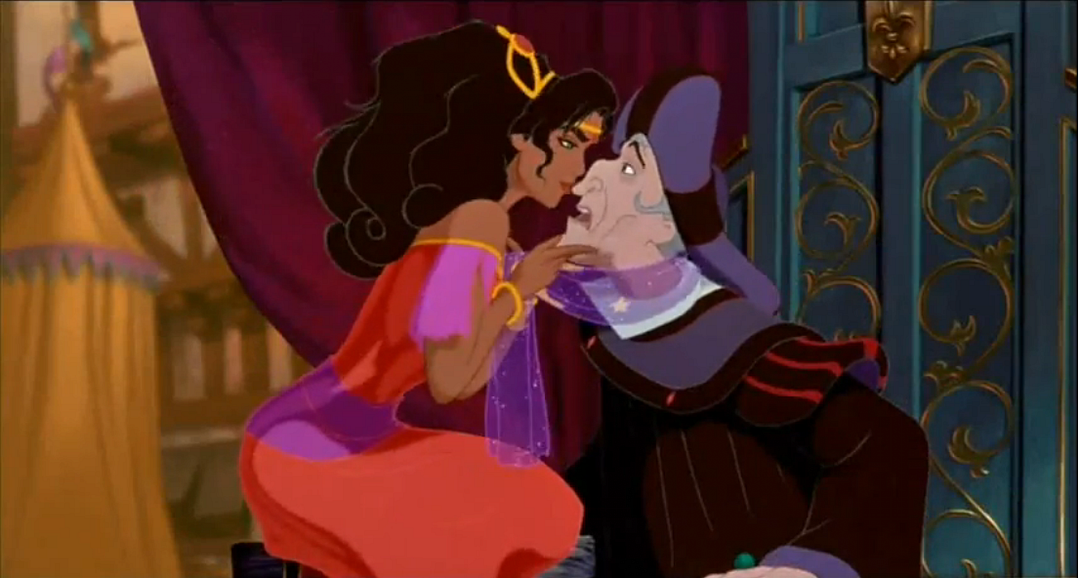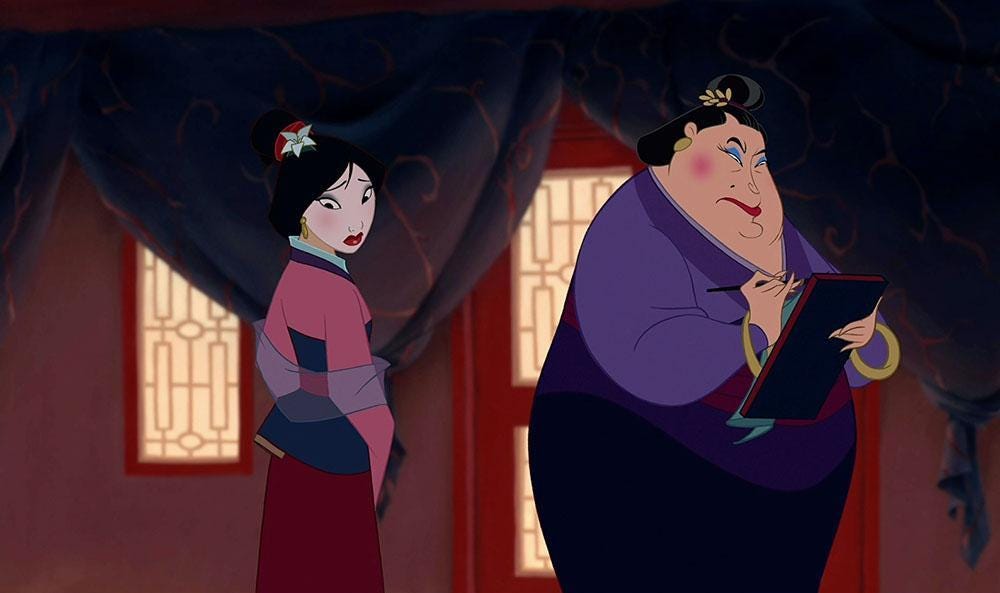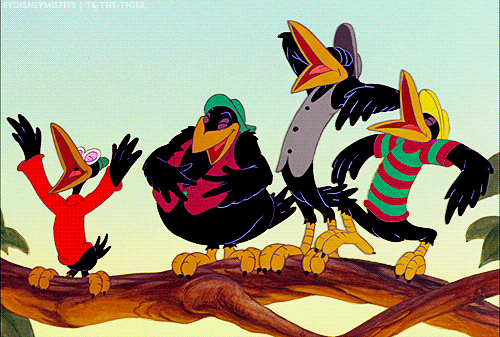This content has been archived. It may no longer be relevant

In my previous article, I examined the classics: Tarzan, Pocahontas, Aladdin and several others in order to bring to light the racist tropes that have become so normalised within Disney. While Disney is a universally beloved franchise, they are deeply problematic. This can be most blatantly noticed through films like the Film Song of the South or the original animated shorts that were produced in the 1940s, yet this essay will not examine that blatant racism, focusing on the more subtle ways Disney perpetuates racist stereotypes.
Even some of Disney’s more recent films, though not overtly insidious in nature, feature problematic caricatures and assumptions about certain groups of people of color. The first: a pervasive trope that affects women of color, is the Temptress. Disney’s HunchBack of Notre Dame is the retelling of Victor Hugo’s novel published in 1831, and is an animated musical drama film released in 1996, during their Renaissance era. This movie is set in France in the 18th century, and the main theme seems to be whiteness vs. other. I can admittedly say this is one of Disney’s darkest films.
Please note that this film uses a slur against the Romani people: ‘G*ypsy’, and that this slur is used several of the characterizations of the films’ main and secondary characters.
I would like to highlight Esmeralda, the sole female protagonist and the love interest. Esmeralda is a young woman with dark brown skin, green eyes, who travels in a pack with other entertainers. Esmeralda is the fixation of several characters in the film from Phoebus and Quasimodo, to Frollo. While the males have varying degrees of interest in Esmeralda I will take the point to Frollo. Frollo, the main antagonist, is a morally bankrupt judge who uses bigotry to seize power. He antagonizes several characters but his sentiments towards Esmeralda are by far the most visceral.
Esmeralda in many ways a metaphor for an ‘other’. She’s unapologetically brown, and free spirited, often seen to be dancing in public. She’s Frollo’s antithesis, and pushes backs against the social order that he tries to enforce. This enrages Frollo and there are several homages where Esmeralda is blinded by his lust and rage.Though it is never specified what age Esmeralda is, it is assumed she is either an older teen or young woman, while Frollo is an elderly man. There are several moments where Frollo’s obsession is a key example of fetishization of brown women. It is a common stereotype attributed to Romani woman; being penned as a seductress. Historically Romani women have been forced into hardships that exploit them, often when they were enslaved they were raped by their captors. Esmeralda, though she is not a sex slave in the film, is unnecessarily sexualized, something we have seen with other Disney heroines of colour; Jasmine from Aladdin comes to mind. Her dance (below) mimics a fusion between a lap and pole dance. We know that, in many aspects of media, white femininity is the norm and anything that deviates from that is tainted. This alone is often used to justify the mistreatment of women of color in fiction and reality.
The next animated feature I am analyzing is Disney’s Mulan. Yes, this 1998 classic that is often praised for its feminist storyline is also problematic, though it is not immediately obvious why. There are several traces of subtly woven in orientalism throughout the film. Orientalism is a term coined by art historians and media critics to describe the west’s fixation on Eastern cultures. The western gaze sees the orient as exotic, mystical and at times barbaric, as can be seen in both Disney’s Pocahontas and Aladdin.
Mulan is shown in several scenes throughout the film seeking guidance from ancestors who can be summoned on a whim with a gong. This misconstrues many of the traditions seen in Chinese religion, though it is not making any particular pointer to any religion that may have been practiced in China. Ancestor worship is a religious practice based throughout various Asian cultures where deceased family members have a continued existence, that the spirits of deceased ancestors will look after the family, take an interest in the affairs of the world, and possess the ability to influence the fortune of the living. However, Mulan makes ancestral veneration seem mystical and otherworldly, especially when compared to western religions.
We know that Mulan is based on the folklore of Hua Mulan, a story that originated in 4th Century China, and that the story is significant to the people of China, taught as children as a ballad. While we know Mulan is Chinese, Disney apparently doesn’t, as implied by the Japanese motifs seen in the film, and in the matchmaker scene, Mulan is made up in a way that is similar to the styles of Geisha and Maiko of Japanese culture. Orientalism assumes that all East Asian cultures are the same, and assumes because of the geographical location of China and Japan they are interchangeable, thereby erasing cultural nuances and differences.

Orientalism tries to enforce gender roles and expectations by a western standard anything that deviates from whiteness is ostracized. An example of this is the portrayal of Captain Shang; the male protagonist in Mulan and love interest. He is stoic and devoted to his duties, showing no sign of being interested in Mulan, or any woman, till the very end of the movie. The western imagination imagines Asian men to be asexual/aromantic having little to no interest in romance, child rearing, and love. More modern orientalist portrayals of Asian men, like Captain Li Shang, is that all Asian men know some martial arts/ kung fu.
In my last article, I pointed that, historically Disney uses animals to depict stereotypes of people of color. This is problematic because this tradition still continues today, in more subtle ways. The crows in Dumbo are an example of what many people think of Black people; the crows speak in a southern drawl usually associated with Black people in the 1940s. During the 1940s it was not uncommon to have white actors portray African Americans in blackface. So it is more than likely that the animators thought this depiction was acceptable because it was so present during that time. However, it does not change the fact images like this are harmful. Images like this reinforce that Black men are lazy and are only worth having around for comedic purposes.

The Lady and the Tramp is portrays two siamese cats speaking in slurred English, singing in a whispering tone which insinuates that have ill intentions. It should be noted that the cats are depicted to have buck teeth and slanted eyes; features commonly associated with East Asians. This trope also appears in Aristocats and in Chip n’ Dale’s Rescue Rangers, often depicting characters using chopsticks, conical hats, or Fu Manchu mustache, and are all examples of this ‘othering’ of Asians.
Disney also has non speaking characters throughout their earlier works, such as pickaninnies, barbarians, and savages. Many of these videos have been erased from the internet but if you search hard enough you can find them.
In conclusion, while Disney is a undoubtedly a great company which has launched many of our favorite franchises, they constantly produce harmful imagery, whether intentionally or unintentionally and are not above critique.While several of the movies mentioned above are favorites of mine, as a feminist I have to critique them. I hope that this article helps you examine other ways that racist tropes permeate the fictitious worlds we love, and is a reminder that no piece of media is completely detached from its writers’ unconscious biases.
Author: Brittney Maddox
Editor: Mara Zain
 From Pretty Little Liars to May December: Grooming in Media
From Pretty Little Liars to May December: Grooming in Media  X-Men ‘97: An Adventurous Series Filled with Nostalgia
X-Men ‘97: An Adventurous Series Filled with Nostalgia  The Disappointing Reinvention of Netflix’s Avatar: The Last Airbender
The Disappointing Reinvention of Netflix’s Avatar: The Last Airbender  Iwájú: A Triumphant Tale of Two Friends and Two Worlds
Iwájú: A Triumphant Tale of Two Friends and Two Worlds  One Day is a Wonderfully Heartbreaking Love Story
One Day is a Wonderfully Heartbreaking Love Story 